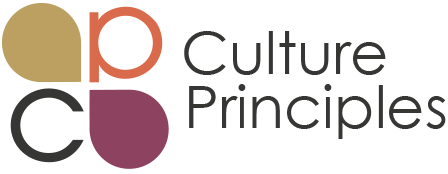 Recently I wrote an article titled What We’re Missing About Diversity: How Words Matter in Achieving Equity and Inclusion, where I laid out my concerns about how the word diversity is being weaponized by some as a means, whether intentionally or carelessly, to “other” people. Today I want to want to examine this from another angle. Both the words we use and the mindsets behind them have a direct impact how we approach diversifying our workforce.
Recently I wrote an article titled What We’re Missing About Diversity: How Words Matter in Achieving Equity and Inclusion, where I laid out my concerns about how the word diversity is being weaponized by some as a means, whether intentionally or carelessly, to “other” people. Today I want to want to examine this from another angle. Both the words we use and the mindsets behind them have a direct impact how we approach diversifying our workforce.
Diversity in the workplace is essential for any business that wants to remain competitive and innovative in today’s ever-changing world. A diverse workforce means employees from different backgrounds, cultures, and experiences who can bring fresh perspectives to an organization. This diversity of thought can spark creativity, open up new growth opportunities, and help organizations stay ahead of their competition. Additionally, it allows companies to better understand and serve their customers’ needs globally. But here’s the catch having a diversity of groups is only a starting point.
I, for one, certainly want to see more representation of gender, racial groups, ability levels, and other social identities in teams and leadership positions. Yet, membership in a group alone does not mean instant value add or disadvantage.
Far too many organizations rush to diversify their hiring processes, boards of directors, and programming without fully valuing the contributions that could be realized if only they were able to get out of seeing these “diverse” groups as monolithic.
Recognizing Monolithic Thinking
The problem of monolithic thinking remains a significant issue in organizations today. Monolithic thinking describes the tendency to view cultures, experiences, and people from a single perspective. This type of thinking stunts our ability to understand and interact with people from other backgrounds and can lead to other exclusionary practices that limit inclusion, equity, and understanding as we overemphasize group membership.
Has your water cooler talk ever centered around any of these conversations?
- We have to think carefully about promoting Maria. She just got married, and I am sure she plans on having kids soon.
- I’m pretty sure they won’t want to join the board of directors because we have a Give/ Get policy, which will likely be a stretch for them.
- Asking a colleague how they are celebrating “Juneteenth, Rosh Hashanah, etc.” without understanding their connection (or lack of) to the holiday.
- We know you have a sick parent at home, so we figured you would want to skip the team get-together on Saturday.
These simple statements are rooted in stereotypes and unconscious bias and are often applied as a blanket belief about all group members. Leaving very little room for individuals to both belong to a group and have individual preferences, behaviors, and desires.
When our actions are centered in monolithic thinking, we run the risk of making decisions on behalf of another person because we believe we know what they value and need.
Patterns vs Stereotypes
Even in the case of well-intentioned motives, an absenting of knowledge about cultural patterns and awareness of what actually drives our colleagues on an individual level is a recipe for disaster.
Recognizing the differences in cultural patterns and individual behavior is essential because both are necessary for inclusion. Cultural patterns provide a better understanding of how certain groups interact, while individual behavior allows us to appreciate each person’s unique contributions. Membership in a cultural group does not automatically mean adherence to that group’s norms. So if you find yourself getting ready to say, “You’re not like other _______ people,” just pause and resist the urge to apply monolithic thinking. When organizations fail to understand these nuances, they risk alienating people and closing themselves off from valuable perspectives.
By recognizing cultural patterns and individual behavior, we can create an environment where everyone feels comfortable expressing their ideas, opinions, and experiences without fear of judgment or exclusion. This type of inclusive atmosphere encourages collaboration, creativity, innovation, and growth in any organization.
So what can organizations do to reduce monolithic thinking?
As leaders, we are responsible for recognizing and addressing monolithic thinking within our organizations. Reducing monolithic thinking requires us to take the initiative to actively examine our assumptions, experiences, and biases to create an environment that celebrates inclusion and diversity in all forms. We must focus on more than surface-level inclusion and look deeper to understand the nuances of our colleagues’ cultures, backgrounds, and interests.
By doing so, we can create a workplace where everyone feels respected, valued, and appreciated for their contributions. To realize inclusion in its fullest capacity, it is time that we move beyond monolithic thinking.
- In what ways have you seen monolithic thinking impact an organization’s culture?
- What is the biggest challenge of overcoming monolithic thinking?
- What strategies have you used to overcome monolithic thought patterns in your own work environment?
If you are interested in exploring this topic and better understanding how you can reap the benefits not only of demographic diversity but also diversity of perspectives, join us for our upcoming Reimagining Racial Equity 8- Week Learning Intensive starting on April 4th.
